Flu in schoolchildren, pharmaceuticals in Lake Michigan, and air pollution darkening the white marble of the Taj Mahal. While these might seem like completely random topics they all have something in common – Wisconsin State Laboratory of Hygiene (WSLH) scientists and testing technology.
As part of the University of Wisconsin-Madison, research is one of the core parts of the WSLH’s mission. Recently three research projects in which WSLH scientists have collaborated received media attention.
ORCHARDS school flu study
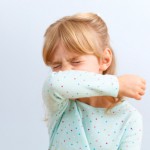 This CDC-funded University of Wisconsin-Madison study focuses on schoolchildren in the Oregon, WI school district and combines rapid testing at a UW clinic lab, confirmatory PCR testing at the WI State Laboratory of Hygiene Communicable Disease Division, and epidemiology with the goal of better understanding how the flu and other respiratory viruses can spread amongst children and hopefully find trends that could minimize or prevent school outbreaks.
This CDC-funded University of Wisconsin-Madison study focuses on schoolchildren in the Oregon, WI school district and combines rapid testing at a UW clinic lab, confirmatory PCR testing at the WI State Laboratory of Hygiene Communicable Disease Division, and epidemiology with the goal of better understanding how the flu and other respiratory viruses can spread amongst children and hopefully find trends that could minimize or prevent school outbreaks.
The WSLH also performed testing last year using the rapid flu testing platform being utilized in the study to verify it would work in this context.
WKOW-TV story
Wisconsin State Journal story
Pharmaceuticals and Personal Care Products in Lake Michigan
 WSLH Environmental Health Division scientists collaborated with University of Wisconsin-Milwaukee researchers to measure levels of drugs and personal care products in Lake Michigan off the Milwaukee shoreline. It has long been assumed that the size and water volume of the Great Lakes would dilute these materials, but this research calls that into doubt.
WSLH Environmental Health Division scientists collaborated with University of Wisconsin-Milwaukee researchers to measure levels of drugs and personal care products in Lake Michigan off the Milwaukee shoreline. It has long been assumed that the size and water volume of the Great Lakes would dilute these materials, but this research calls that into doubt.
Milwaukee Journal-Sentinel story on newest phase of this research
Interview from 2013 with WSLH Research Scientist Dr. Curt Hedman about the findings of the first phase of the research
Carbon Soot and the Taj Mahal
 The beautiful white marble of the Taj Mahal in Agra, India has been getting dirtier over the last few decades. Researchers in India and at Georgia Tech and the WSLH Environmental Health Division have determined that carbon soot from air pollution is to blame. The next step is to determine where the contamination is coming from and what to do about it.
The beautiful white marble of the Taj Mahal in Agra, India has been getting dirtier over the last few decades. Researchers in India and at Georgia Tech and the WSLH Environmental Health Division have determined that carbon soot from air pollution is to blame. The next step is to determine where the contamination is coming from and what to do about it.
The answers aren’t just important for one of the most beautiful buildings in the world, but also for the many people living in the area since these types of contaminants can also cause negative health effects.
International Business Times story
Wisconsin State Journal 2012 story about the research
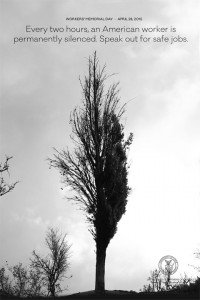
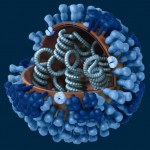 As this past flu season showed, determining exactly which strains of influenza virus to include in the annual flu vaccine can be tricky. And with influenza’s high infection and death rate and its ability to mutate, these decisions can be life or death.
As this past flu season showed, determining exactly which strains of influenza virus to include in the annual flu vaccine can be tricky. And with influenza’s high infection and death rate and its ability to mutate, these decisions can be life or death.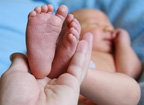 The
The 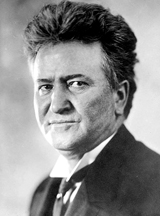
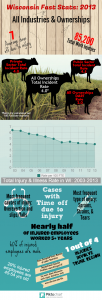
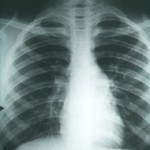 The old saying “you are what you eat” may be joined by a new variation – “you are what you breathe” – due to an innovative research collaboration between an engineer and a transplant surgeon.
The old saying “you are what you eat” may be joined by a new variation – “you are what you breathe” – due to an innovative research collaboration between an engineer and a transplant surgeon. This CDC-funded University of Wisconsin-Madison study focuses on schoolchildren in the Oregon, WI school district and combines rapid testing at a UW clinic lab, confirmatory PCR testing at the WI State Laboratory of Hygiene Communicable Disease Division, and epidemiology with the goal of better understanding how the flu and other respiratory viruses can spread amongst children and hopefully find trends that could minimize or prevent school outbreaks.
This CDC-funded University of Wisconsin-Madison study focuses on schoolchildren in the Oregon, WI school district and combines rapid testing at a UW clinic lab, confirmatory PCR testing at the WI State Laboratory of Hygiene Communicable Disease Division, and epidemiology with the goal of better understanding how the flu and other respiratory viruses can spread amongst children and hopefully find trends that could minimize or prevent school outbreaks. WSLH Environmental Health Division scientists collaborated with University of Wisconsin-Milwaukee researchers to measure levels of drugs and personal care products in Lake Michigan off the Milwaukee shoreline. It has long been assumed that the size and water volume of the Great Lakes would dilute these materials, but this research calls that into doubt.
WSLH Environmental Health Division scientists collaborated with University of Wisconsin-Milwaukee researchers to measure levels of drugs and personal care products in Lake Michigan off the Milwaukee shoreline. It has long been assumed that the size and water volume of the Great Lakes would dilute these materials, but this research calls that into doubt. The beautiful white marble of the Taj Mahal in Agra, India has been getting dirtier over the last few decades. Researchers in India and at Georgia Tech and the WSLH Environmental Health Division have determined that carbon soot from air pollution is to blame. The next step is to determine where the contamination is coming from and what to do about it.
The beautiful white marble of the Taj Mahal in Agra, India has been getting dirtier over the last few decades. Researchers in India and at Georgia Tech and the WSLH Environmental Health Division have determined that carbon soot from air pollution is to blame. The next step is to determine where the contamination is coming from and what to do about it.